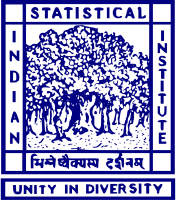Suvendu Das Review of Indian Statistical Instiute, K...
Mahalanobis set up the Statistical Laboratory in t...
Mahalanobis set up the Statistical Laboratory in the Presidency College sometime in the 1920s. On 17 December 1931, the Indian Statistical Institute was founded as a learned society and housed in the Statistical Laboratory. The Institute was registered on 28 April 1932, as a non-profit distributing learned society under the Societies Registration Act (XXI of 1860) and is now registered under the West Bengal Societies Registration Act XXVI of 1961 amended in 1964. Sir R.N. Mookerjee accepted the office of the President of the Institute, and held this office until his death in 1936.
During the 1920s and until the mid-1930s, all or nearly all the statistical work done in India, was done single-handedly by Mahalanobis. The early statistical studies included analyses of data on stature of Anglo-Indians, meteorological data, rainfall data, data on soil conditions, etc. Some of the
findings of these early studies were of great impact in the control of floods, development of agriculture, etc., and led to the recognition of Statistics as a key discipline.
Mahalanobis' influence was so pervasive that students of Physics began to take interest in Statistics. Subhendu Sekhar Bose was the most notable of them. Later, several talented young scholars including J.M. Sengupta, H.C. Sinha, R.C. Bose, S.N. Roy, K.R. Nair, K. Kishen and C.R. Rao, joined to form an active group of statisticians. Mahalanobis continued to be the nucleus. Theoretical
research in Statistics began to flourish in the Institute. Research on large scale sample surveys won Mahalanobis a Fellowship of the Royal Society. Design and analysis of agricultural experiments also bloomed and led to some international contacts, notably with Sir Ronald A. Fisher..

Comments: